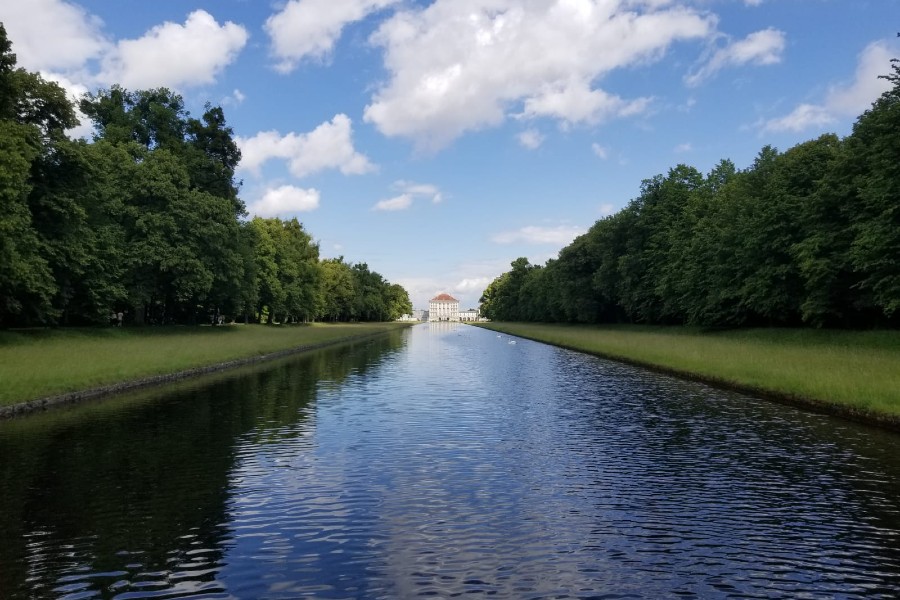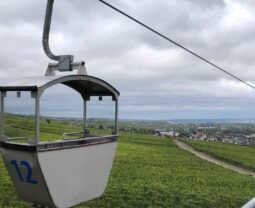In June of 2020, immediately after our teenagers finished the school year, we headed to Munich for a post-lockdown family vacation. The German borders still weren’t open, but we were finally allowed travel within Germany. With that understanding, we headed south to the state of Bavaria, which many refer to as the ‘Texas of Germany.’
Bavaria is very different from the rest of Germany. Once part of the Austro-Hungarian empire, it shares its history with Austria, Northern Italy, Hungary and Czech Republic. With their friendlier attitude, dialect, and lederhosen, the culture of Bavarians down south is very different from where we are in Frankfurt. If they had their druthers, Bavaria would prefer to be separate from the rest of Germany, so I have heard.
Within Bavaria, Munich is the largest city filled with a ton of history, especially from World War II. Though Munich is only a little over a four-hour drive from our home, it’s an often overlooked destination city. However, it is host to plenty of activities and sites for the family.
A video recap of our trip is at the bottom of the post.
1. Marienplatz (Munich’s City Hall)

Look on TripAdvisor and this will likely be the top site recommendation to visit. And, yes, you should see it. Honestly, it is about a 10-minute stop unless you want to take advantage of all the shopping nearby and restaurants, which you should. The Marienplatz is the city’s very ornate City Hall, and most of it was destroyed during the Second World War. Plan to visit at noon though to see the figures — which I remember as a kid being much more interesting — dance and twirl to the music. In normal times, the main square in front of City Hall (also the home to the holiday Christkindlmarkt) will be packed with people. When we visited, it was nearly empty, making it pleasant to ‘people watch.’ There is a bookstore across the square with some great views from the second floor if the plaza is too crowded.
A few recommendations while you’re in this area. In the evening, you’ll see a few “night watchmen” in costumes beginning their tours. Around the corner is the Viktualienmarkt with its food, grocery, and craft stalls. The Hofbrauhaus is not too far away, either. Overall, there is a lot of history in this central location. I would recommend you get a tour guide to explain all the interesting World War II history within a few blocks of this location.
We took an amazing Third Reich Tour with Experience Munich tours. Because of COVID, the tour company went their separate ways. But you can still tour with the company or contact our guide Jax directly on Instagram.
Related: What to Know About Traveling During a Pandemic
2. Hofbräuhaus
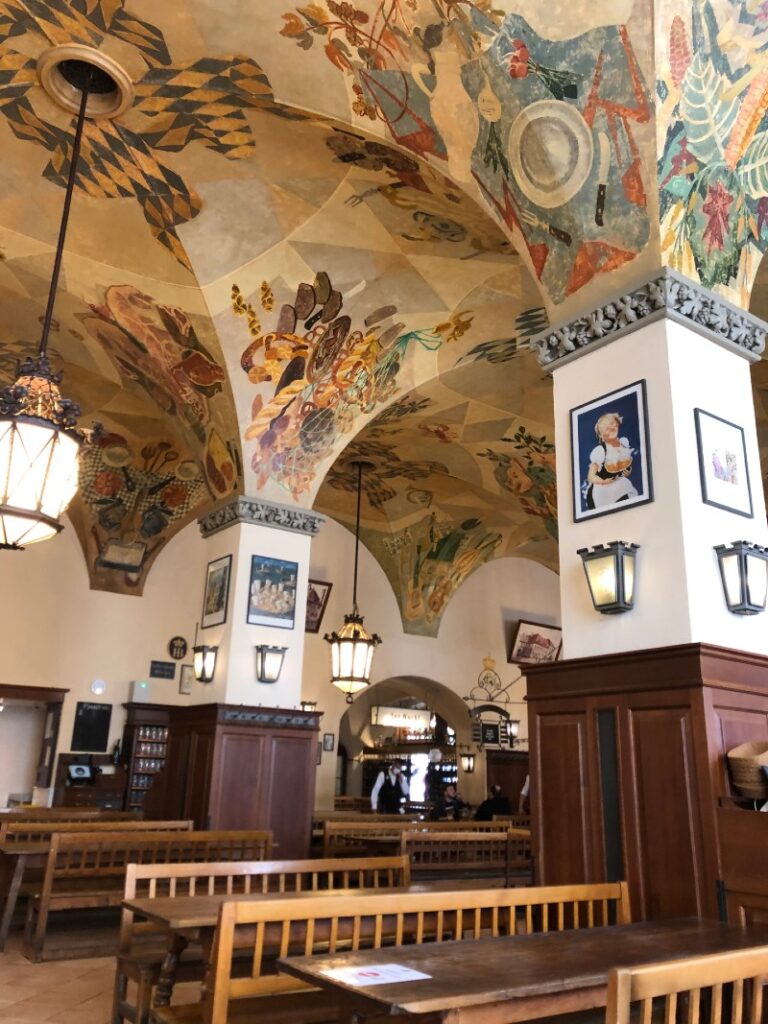
When visiting Munich, you must make this a stop, even if you choose not to eat or drink here. The food isn’t anything special, and the beer you can find in any restaurant in town. But do make the time to walk through this massive hall as it has a ton of history. Plus, it’s a great way to see how beer is part of the culture in Bavaria.
In normal times, more than 35,000 people visit the Hofbräuhaus brewery every day. This particular beer hall has been frequented by tons of celebrities, politicians, and artists including Mozart, who lived around the corner. And as Hitler came to rise in Germany, the National Socialists held its first meeting on the third floor of the Hofbräuhaus. Our tour guide told us swastikas used to be on the ceiling of the beer hall. After the building was restored after WWII, Bavarian flags were painted over them, but still resemble the shape. Various beer halls around the city served as venues for gathering support for the Third Reich.
It’s not just a tourist attraction. Everyday you will find regulars meeting with friends to enjoy a beer.
Related: Visiting Nearby Dachau Concentration Camp with Teens
3. Eisbach River Surfing
The Isar River runs through Munich, and a small man-made river branches from that and flows through the Englischer Garten. In one section, a man-made wave was created where people actually surf. I don’t ever remember seeing this when I lived there a kid, and I think I would remember it. Unless you or your family are really good surfers, I would not give this a try, but it’s really fun to watch.
People line up on either side of the river, and each side alternates on taking turns on this wave. While we were there, it was very civilized, supportive, and good fun. My kids enjoyed just sitting on the bank and watching these locals of all ages try their skills.
4. Englischer Garten

This massive park, one of the world’s largest urban parks, stretches through downtown Munich. With tons of trails to walk or run, you’ll find people laying on the grass, playing soccer or volleyball, or eating in a few of the biergartens. Allow for at least a few hours in the Englischer Garten. Since most things are closed on Sundays, the park is packed with families on Sunday afternoons. Like other urban parks such as New York City’s Central Park, Madrid’s Retiro or Berlin’s Tiergarten, it’s a nice option on a beautiful day to soak in some sun, enjoy nature, and really see first-hand the local culture.
We walked through the park on a particularly glorious sunny day. Everyone’s feet were sore from all the walking the day before so we sprawled out on the grass to nap/rest.
5. Nymphenburg Palace

Over the years, we’ve seen our fair share of palaces such as Versailles in Paris and Schönbrunn in Vienna so getting teenagers excited to see yet another palace can be a challenge. We have found what they seem to appreciate more than the elaborate interiors are the gardens surrounding these massive structures.
The Baroque-style Nymphenburg Palace, built in the 1600s, was the summer home for the ruling family. When walking up to the palace, the front is massive even surpassing the size of Versailles. The gardens extend behind the palace into the local neighborhoods. How cool would it be to have this as your backyard?
From downtown Munich, it’s only a 20-minute journey on public transportation–U-Bahn to the tram. Then it’s just a short walk to the palace. Definitely try to save this for a good weather day. Walking through the palace took very little time, as there were no crowds due to COVID, but the palace grounds were fun to explore. Admission for kids under 18 is free, and they do audio guides available in English. In the end, we opted to skip the audio guide, but discovered enough signage around the palace was in both German and English that allowed us to better understand who lived there and a little about each room.
6. Olympiapark (Olympic Park)

Munich was home for the 1972 Olympic Games. It was a memorable one and not in a good way. (A Palestinian terrorist killed two Israeli athletes and took additional hostages during the Games.) The Olympic Stadium and accompanying halls were very futuristic and still remain so.
Olympiapark, about 5 km from Munich’s city center, is a vibrant park filled with activities such as boating, skating, and a roof climb with ropes and ziplining. There is an aquarium and rock museum as well. The park is home to a huge stadium, which is perfect for sport enthusiasts, as well as a venue for many concerts and festivals.
Sadly, I couldn’t get any takers to visit the park during our short visit to Munich, but I have been during other visits to Munich and do recommend this as a place to visit.
7. Alte Pinakothek Museum
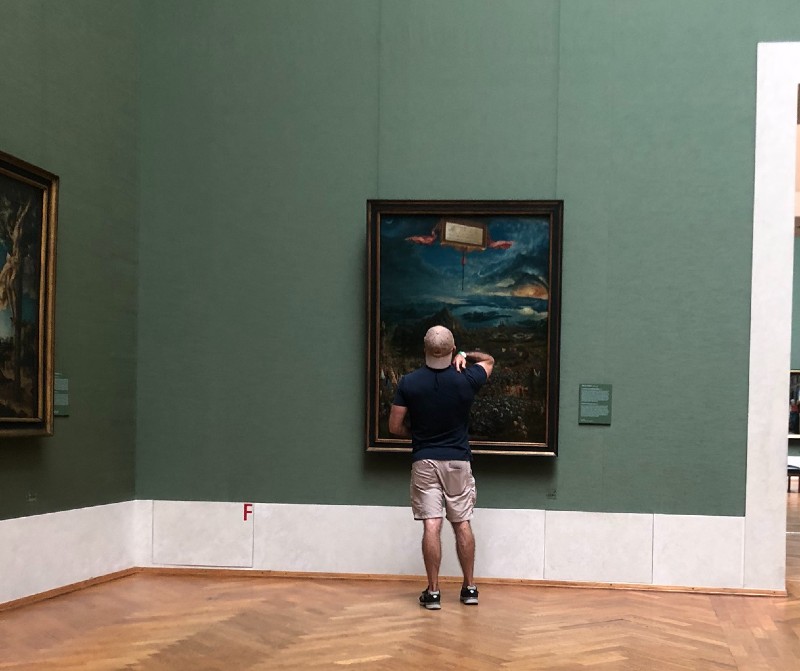
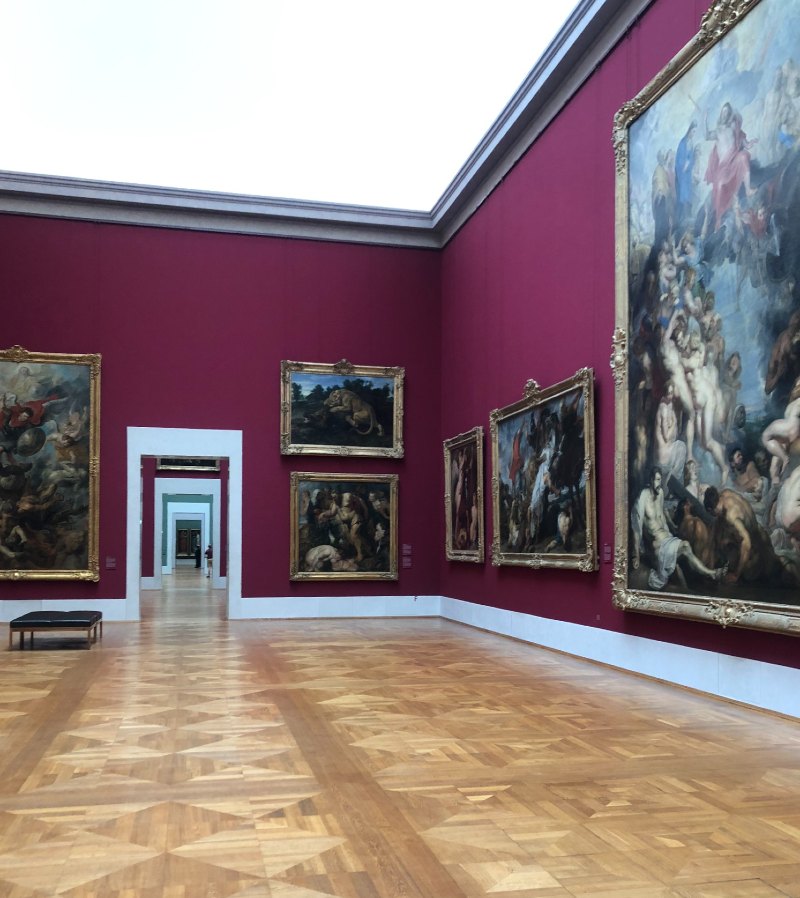
We are not necessarily an art museum family. Of the four of us, only half of us enjoy the art museum in small doses at any given time. Which means in most cities, the local art museum isn’t at the top of our list. Unless we’re talking about some of the really big and important ones you must see, like the Louvre.
However, the Alte Pinakothek was on my husband’s ‘Munich must-see list’ for this one painting: The Battle of Alexander at Issus by Albrecht Altdorfer. He absolutely loves this painting (a print we have hanging in our house) and only wanted to see this. We paid the small fee for us adults, kids under 18 were free, and he sprinted to locate the painting. Painting located, not before sprinting right past it, and he was ready to move on.
The Alte Pinakothek is one of the world’s oldest art museums, and it pleasantly surprised me. While, yes, it’s mainly paintings from 14th to 18th century Spanish, Italian, German, and Dutch artists, the amount of amazing artwork to see is manageable so it doesn’t feel overwhelming. My husband sent the family a link to Culture Trip’s Top 10 Paintings from the Alte Pinakothek. We used this as our guide through the museum, but found others that made us stop in our tracks like Fall of the Damned by Rubens. Again, we skipped the audio guide and used the signs (in both English and German) throughout the museum.
8. Viktualienmarkt
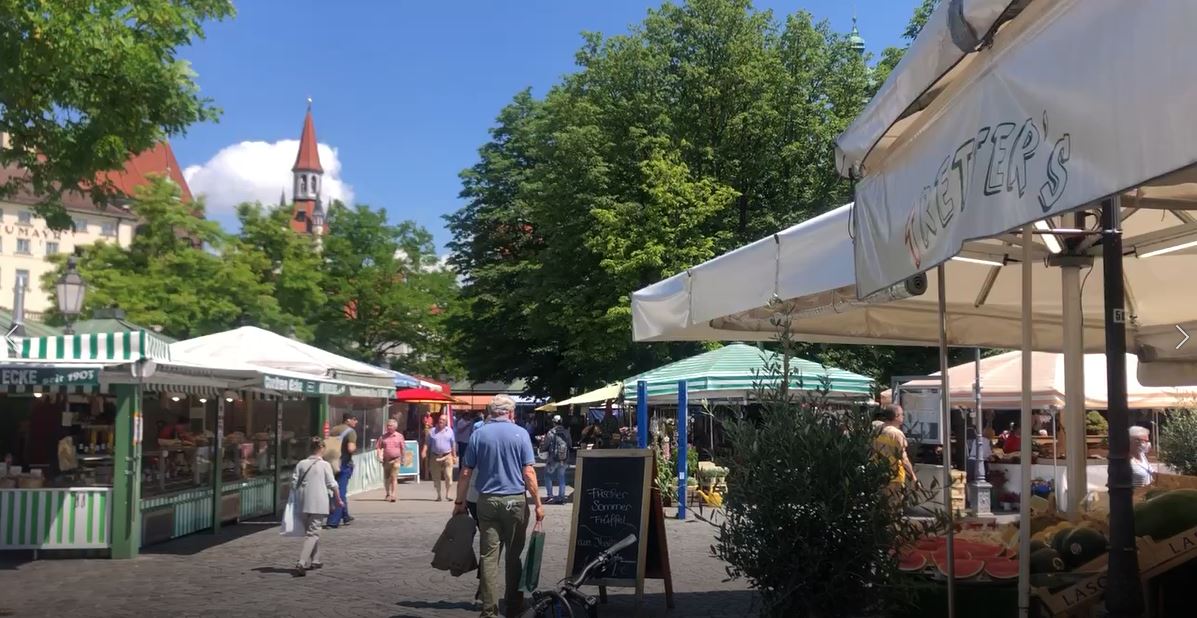
We love food markets! If you only have a short time in a city, visiting a city’s market area or hall is a simple way to get an overview of the local culture and fare. The Viktualienmarkt, which is around the corner from the Marienplatz, is home to 140 stalls and shops offering flowers and plants, fruits and vegetables, eggs, butter, honey, fish, meat, Sausages, herbs, spices, delicatessens, wine, crafts, soaps, and tea assembled on an area covering 22,000 square meters. In addition to the daily market, there are food stalls to enjoy a beer, coffee, lunch, of freshly squeezed juice.
[Video] And Now for the Recap on Our Trip
OlympiaPark Photo by Herr Bohn on Unsplash
